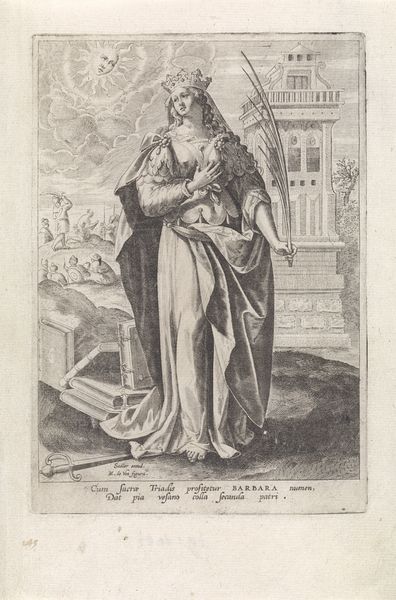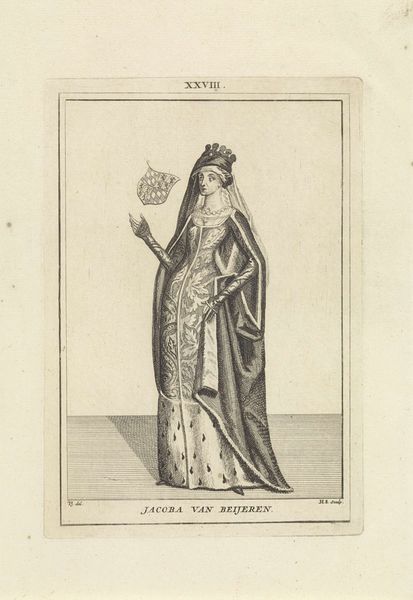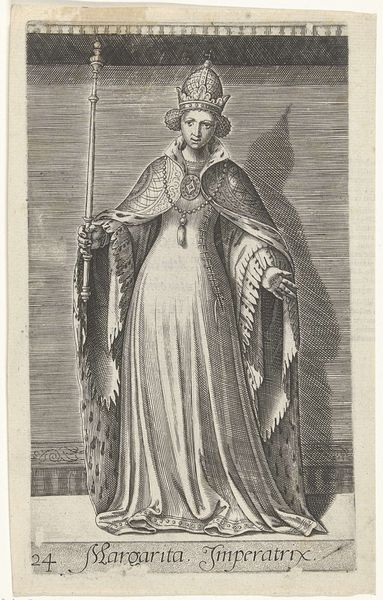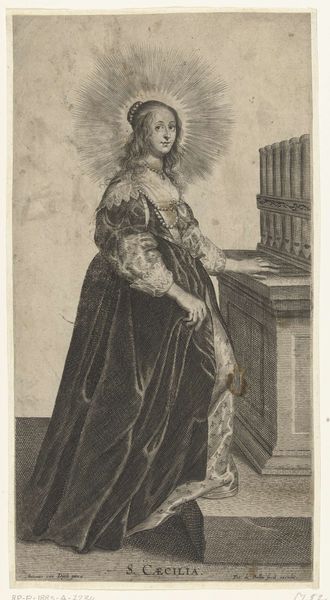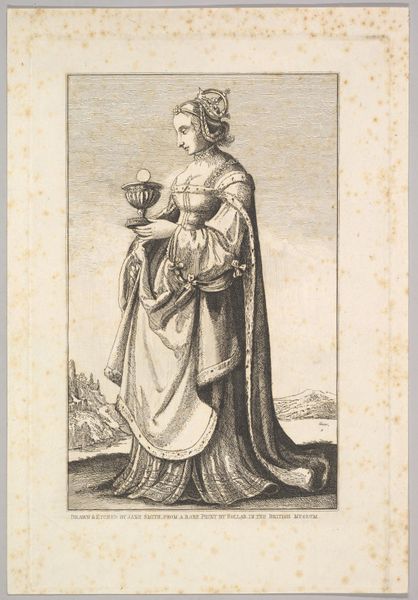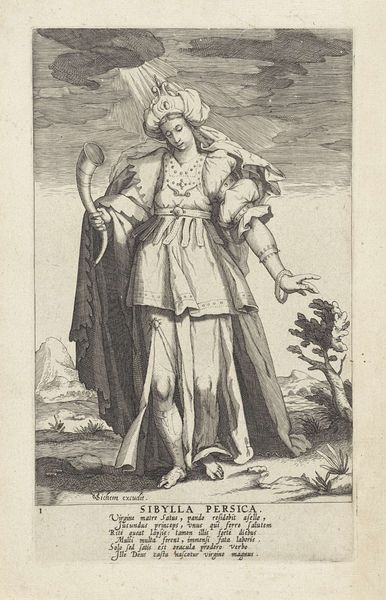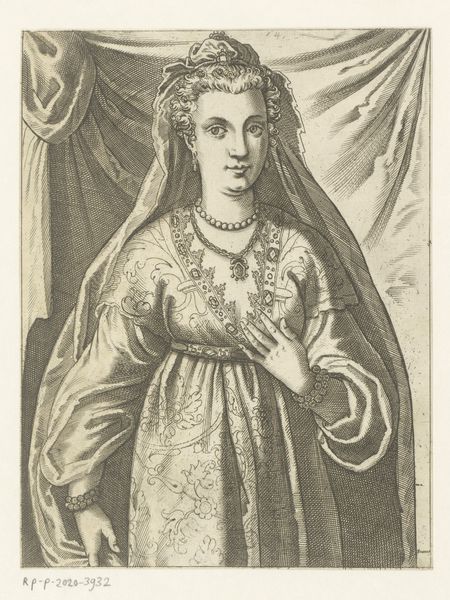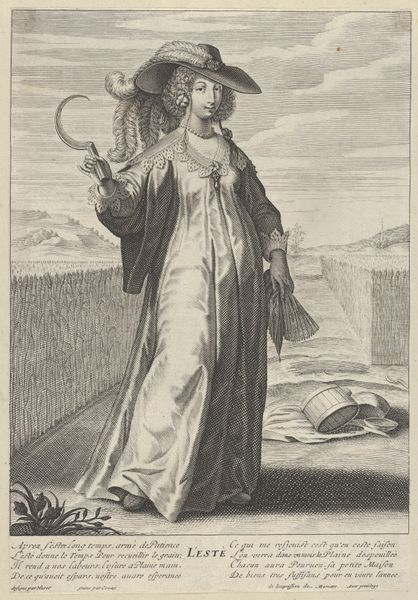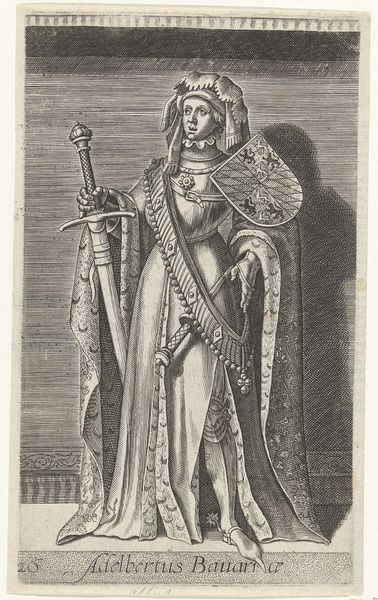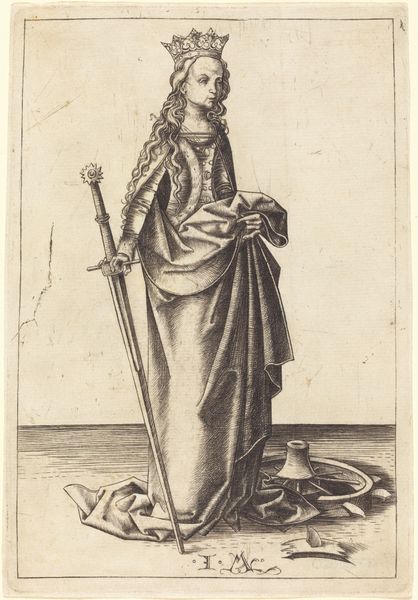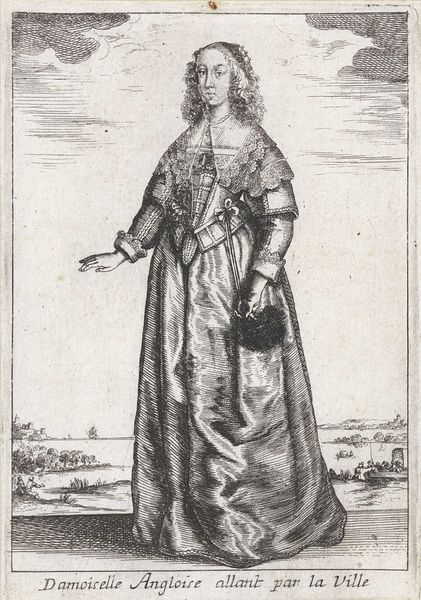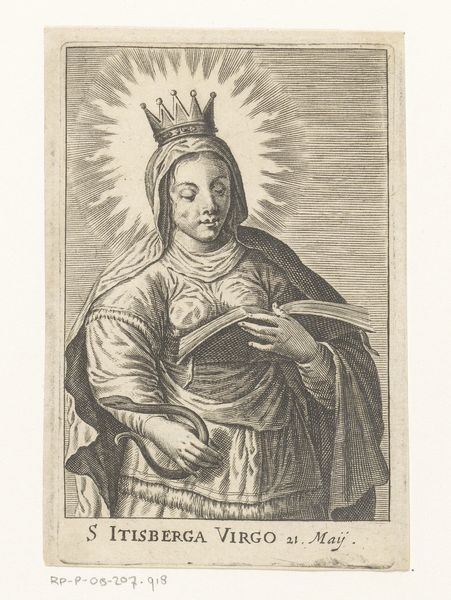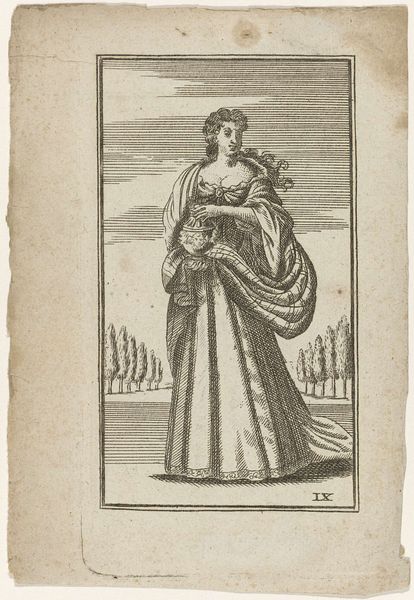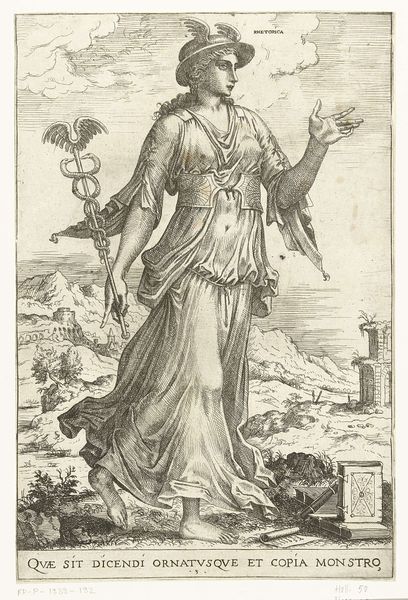
print, engraving
#
portrait
# print
#
figuration
#
11_renaissance
#
history-painting
#
northern-renaissance
#
engraving
Dimensions: width 140 mm, height 215 mm
Copyright: Rijks Museum: Open Domain
Editor: Here we have a standing portrait of an unknown queen, an engraving by Philips Galle dating sometime between 1547 and 1612. She looks very self-assured, but there is something intriguing in the lack of information about her. How do we interpret this portrait without knowing her identity? Curator: That anonymity is key. Portraits of rulers were rarely just about capturing a likeness. They were potent symbols. This engraving would have circulated widely, shaping perceptions of power. The lack of specific identity allows for broader application, doesn't it? Perhaps an archetype of queenship? Editor: Yes, she certainly embodies an idea of regal authority. The crown, the luxurious fabrics, even the background landscape contribute to that impression. Do you think the artist intended this to be more symbolic than literal? Curator: Undoubtedly. Consider the historical context. Printmaking enabled the mass distribution of images, including those of royalty. But these weren't neutral depictions. Galle, like many printmakers, was essentially in the business of constructing a brand, shaping public opinion through carefully crafted imagery. How does that impact our understanding of its authenticity? Editor: That makes a lot of sense. So, the portrait becomes a kind of political statement? Curator: Exactly! It's less about historical accuracy and more about conveying ideals and asserting authority in a visual language that would be understood and circulated. It makes me wonder, who was the audience for a piece like this? Editor: Understanding the queen as an idea, and not necessarily as an individual, shifts the way I view her entirely. Curator: And it helps us recognize how art is so often implicated in larger historical narratives of power and perception.
Comments
No comments
Be the first to comment and join the conversation on the ultimate creative platform.
